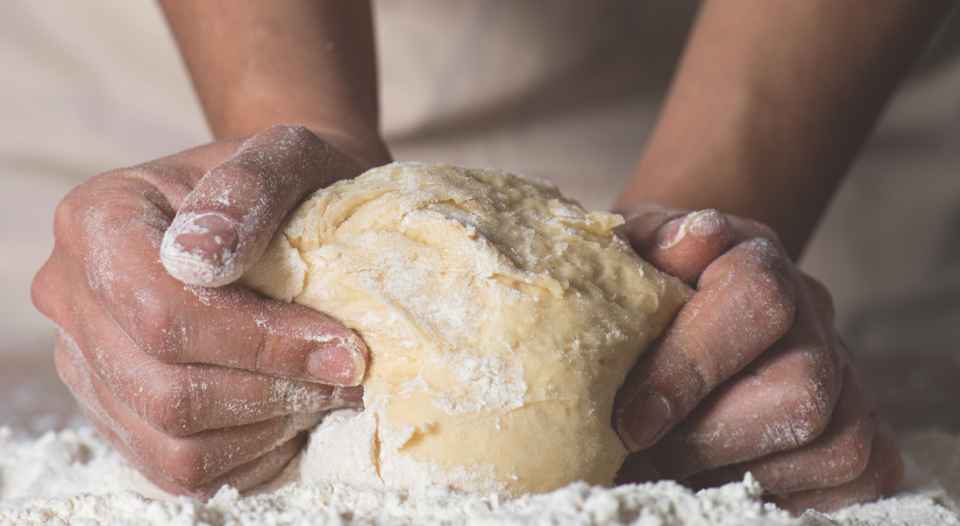If you’ve tried your hand at baking during the pandemic, you aren’t alone. A business report showed that sales of yeast increased 647% during March, and some stores still can’t keep up with demand.
I love when a biblical story jumps out of the pages and intersects with daily life, and right now I’m thinking about that unnamed woman in the Gospel of Matthew who mixes up some yeast and flour.
Jesus said, “The kingdom of heaven is like yeast that a woman took and mixed in with three measures of flour until all of it was leavened” (Matthew 13:33).
Many commentators have written about the rarity of using yeast as a positive commodity in a biblical parable. Others have identified the heightened role (not roll) that Jesus gives to this woman baker. Father Dominic Garramone adds a twist to all of this: “‘Three measures’ is the usual translation for the original Greek ‘tria sata,’ which is a little over a bushel of flour (1.125 bushels, to be precise).”
We think of “compassion” as something that comes from the heart or maybe even the brain. But the original Greek word, ta splankna, is more along the lines of “lower intestines” or in the gut.
Then Father Dom serves up a beautiful image: “What’s the message of the story? It’s simple: The kingdom of heaven is like a woman who wants to do more than feed her family. The kingdom announced by Jesus is like a woman who wants to feed the village. The kingdom of God is like a woman who wants to feed the world. The kingdom is for everybody.”
The kingdom is for everybody! I imagine this woman’s children and grandchildren followed her example of wanting to feed everyone.
This parable foreshadows the largest church picnic, known as the “Feeding of the 5,000,” in Matthew 14. In this story, Jesus “went ashore, he saw a great crowd; and he had compassion for them and cured their sick” (Matthew 14:14). Sometimes in the English language we skip over the word “compassion,” thinking it’s something that comes from the heart or maybe even the brain. But the original Greek word ta splankna is more along the lines of “lower intestines” or in the gut.
Jesus felt something in his gut when he looked at all the people. The unnamed baker in the previous chapter also had the same stomachache.
“It eats at us that people don’t have enough to eat,” a pastor recently said of his congregation. Compassion begins when something “eats at us.”
Recently a pastor told me how much his congregation loved to eat together in pre–COVID-19 days. Those activities are on hold, but the feeding continues. The congregation has increased monetary offerings for ELCA World Hunger and provides takeout meals for their community. The pastor said, “No pun intended—it eats at us that people don’t have enough to eat.”
And that is what verse 14 means. It ate at Jesus that these people—men, women and children—were lost and hungry.
Compassion is what led Jesus to the cross. Compassion led him to offer his life for all, bread for the world, for those hungry physically and spiritually. Compassion happened so that we might have life—new life—and have that life abundantly. Compassion begins when something “eats at us.”
What’s “eating” at you? The pandemic has exacerbated the hunger crisis and experts predict hunger will double before the end of 2020.
When Jesus stood among the hungry crowds, we learn that he took the gifts, blessed them, broke them and gave them away. This familiar pattern is our recipe for action.




